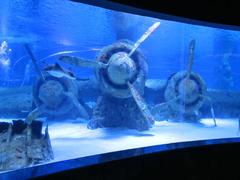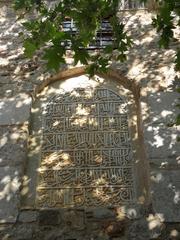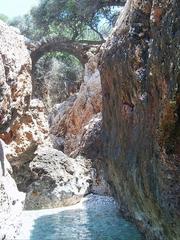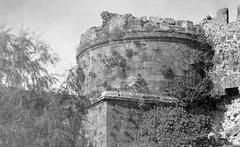Nisa and Antalya Visiting Hours, Tickets, and Historical Sites Guide
Date: 14/06/2025
Introduction
Embark on a journey through two of the region’s most fascinating destinations—Nisa in Turkmenistan and Antalya on Turkey’s Mediterranean coast. Nisa, the ancient capital of the Parthian Empire, stands as a monumental testament to the crossroads of Hellenistic, Persian, and local cultures, while Antalya, famed as the “Jewel of the Turkish Riviera,” offers a vibrant blend of history, culture, and natural beauty. This detailed guide provides comprehensive information on visiting hours, ticketing, accessibility, and practical travel tips to ensure a rewarding and seamless experience at these world-class heritage sites (unescoworld.com; travelsetu.com; TurkeyThings; Adventurefolio).
Table of Contents
- Historical Overview
- Archaeological and Cultural Significance
- Visitor Information and Practical Tips
- Unique Experiences and Events
- Safety, Accessibility, and Essential Travel Tips
- Frequently Asked Questions (FAQs)
- Conclusion
- References and Further Reading
1. Historical Overview
Nisa: The Parthian Capital
Located approximately 18 km southeast of Ashgabat, Nisa was established in the 3rd century BCE by Arsaces I, founder of the Parthian dynasty. This UNESCO World Heritage site encapsulates the grandeur of the Parthian Empire, which thrived from the mid-3rd century BCE to 224 CE, dominating the Near East and controlling pivotal Silk Road trade routes. Nisa comprises two main areas: Old Nisa (the royal citadel) and New Nisa (administrative and residential quarters), both reflecting the empire’s political and cultural importance (unescoworld.com; travelsetu.com).
Antalya: The Jewel of the Turkish Riviera
Antalya, situated on Turkey’s southwestern coast, is celebrated for its spectacular beaches, ancient ruins, and lively culture. As the gateway to the Turquoise Coast, Antalya has long been a crossroads for civilizations and trade, with settlement dating back to the 2nd century BCE (Adventurefolio).
2. Archaeological and Cultural Significance
Nisa’s Artifacts and Architecture
Excavations at Nisa have unveiled a trove of artifacts and architectural marvels, including:
- Ivory Rhytons: Ornate drinking vessels exemplifying Parthian craftsmanship (worldheritagesite.org).
- Terracotta Sculptures: Figurines reflecting mythology and daily life (mad-traveller.com).
- Reliefs and Murals: Palatial artworks depicting royal and mythical themes.
- Architectural Remains: Mud-brick fortifications, palaces, temples, and advanced urban infrastructure (travelsetu.com).
The architectural style demonstrates a unique blend of Hellenistic, Persian, and indigenous influences (unescoworld.com).
Antalya’s Roman and Hellenistic Heritage
Antalya’s rich historical landscape is marked by:
- Kaleiçi (Old Town): Winding streets, Ottoman-era houses, and Roman walls (Goats on the Road).
- Hadrian’s Gate: A well-preserved Roman monument, open daily and free to visit (VisitTurkey.in).
- Aspendos and Perge: Ancient cities known for their theaters, agoras, and colonnaded streets, with visiting hours and ticket prices detailed in the site-specific sections (TurkeyThings).
3. Visitor Information and Practical Tips
Nisa: Visiting Hours, Tickets, and Tours
- Location: Near Bagyr settlement, 18 km from Ashgabat (mad-traveller.com).
- Opening Hours: Daily, 9:00 AM – 5:00 PM.
- Best Time to Visit: October to April, to avoid summer heat.
- Tickets: Approx. $5 USD for foreign visitors (check current rates).
- Guided Tours: Available onsite or via local agencies; recommended for deep insights.
- Transport: Limited public transport; opt for taxi, private car, or organized tours (mad-traveller.com).
- Key Features: Citadel walls, palatial ruins, temples, panoramic viewing platforms (worldheritagesite.org).
- Travel Tips: Dress modestly, bring water and sun protection, avoid touching ruins, and combine with a visit to Ashgabat’s National Museum.
Antalya: Historical Sites, Visiting Hours, and Tickets
- Kaleiçi (Old Town): Free entry, open access; highlights include Hadrian’s Gate and Yivli Minaret Mosque (TurkeyThings).
- Aspendos: Open daily 8:00 AM – 7:00 PM (summer), 8:00 AM – 5:00 PM (winter); approx. 60 TRY (TurkeyThings).
- Perge: Same hours as Aspendos; tickets around 50 TRY.
- Antalya Museum: Open Tuesday–Sunday, 8:30 AM – 7:00 PM (summer), 8:30 AM – 5:00 PM (winter); approx. 35–200 TRY depending on the season and ticket type (motion4rent.com).
- Other Sites: Beaches and natural parks are generally open access with some ticketed facilities (Adventurefolio).
Accessibility and Transportation
- Nisa: Uneven terrain; limited accessibility for wheelchairs and those with mobility issues.
- Antalya: Many attractions, hotels, and public transport have accessibility features, though ancient sites may have uneven ground (motion4rent.com).
4. Unique Experiences and Events
- Nisa: No regular events onsite, but virtual tours and interactive digital content are increasingly available (travelsetu.com).
- Antalya: Annual festivals like the Golden Orange Film Festival, boat tours in the Old City Marina, hiking in Köprülü Canyon, and unique experiences such as skiing in Saklıkent or diving along the coast (TurkeyThings).
5. Safety, Accessibility, and Essential Travel Tips
Safety Overview
Both Nisa and Antalya are considered safe for tourists. In Antalya, petty crime is rare but possible in crowded areas—keep valuables secure and stay in well-traveled places (welcomeantalya.com; theturkeytraveler.com). Medical facilities and emergency services are readily accessible.
Accessibility
- Nisa: Limited, due to ancient architecture and terrain.
- Antalya: Growing number of accessible hotels, beaches, and public amenities; historic sites may require extra planning (motion4rent.com).
Practical Tips
- Travel Insurance: Recommended for all travelers.
- Currency: Turkish Lira (TRY) for Antalya; carry cash for markets.
- Transport: Efficient public transport in Antalya; taxis and accessible vehicle rentals available.
- Language: Turkish is official; English widely spoken in tourist areas.
- Dress Code: Modest attire for religious sites and rural regions.
- Climate: Mediterranean, hot summers and mild winters; best visitation in spring or autumn.
- Connectivity: Wi-Fi in most hotels/cafes; local SIM cards are affordable.
6. Frequently Asked Questions (FAQs)
Nisa
Q: What are the visiting hours?
A: Daily, 9:00 AM – 5:00 PM.
Q: How much are tickets?
A: Approx. $5 USD for foreign visitors.
Q: Are guided tours available?
A: Yes, both onsite and via Ashgabat agencies.
Q: Is Nisa wheelchair accessible?
A: Accessibility is limited.
Q: When is the best time to visit?
A: October to April.
Antalya
Q: Are historical sites accessible for wheelchair users?
A: Many offer partial accessibility; ancient terrain may be uneven.
Q: What are the opening hours for major attractions?
A: Generally, 8:00/8:30 AM to 7:00/8:00 PM in summer; shorter in winter.
Q: Is Antalya safe for solo travelers?
A: Yes, with standard precautions.
Q: When is the best time to visit?
A: May to October for warm weather; spring and autumn for fewer crowds.
Q: Are credit cards accepted?
A: Widely accepted, though cash is handy for small vendors.
7. Conclusion
Nisa and Antalya offer travelers remarkable opportunities to explore ancient civilizations and vibrant modern culture. Nisa’s archaeological legacy and innovative conservation efforts provide invaluable insight into the Parthian era, while Antalya’s combination of Roman and Hellenistic sites, stunning natural landscapes, and dynamic urban life make it a top destination on the Mediterranean. By planning ahead and embracing both historical depth and practical travel strategies, visitors can experience the best these sites have to offer. For ongoing updates and personalized travel planning, consider downloading the Audiala app and following our related social media channels.
References and Further Reading
- Parthian Fortresses of Nisa (unescoworld.com)
- Nisa UNESCO World Heritage Site Tourism History (travelsetu.com)
- Parthian Fortresses of Nisa (mad-traveller.com)
- Nisa World Heritage Site (worldheritagesite.org)
- Turkish Riviera Guide (Adventurefolio)
- Things to Do in Antalya (Goats on the Road)
- Antalya Travel Guide (TurkeyThings)
- Visit Turkey - Antalya City Guide (VisitTurkey.in)
- Antalya Tourist Information (AntalyaTouristInformation)
- 9 Questions Smart Travelers Ask Before Visiting Antalya (TravelerPlus)
- Is It Safe to Travel to Turkey in 2025? (welcomeantalya.com)
- Is Antalya Safe? (theturkeytraveler.com)
- Guide Antalya in Wheelchair (motion4rent.com)





